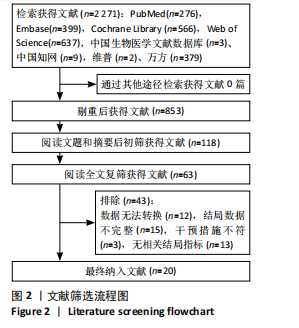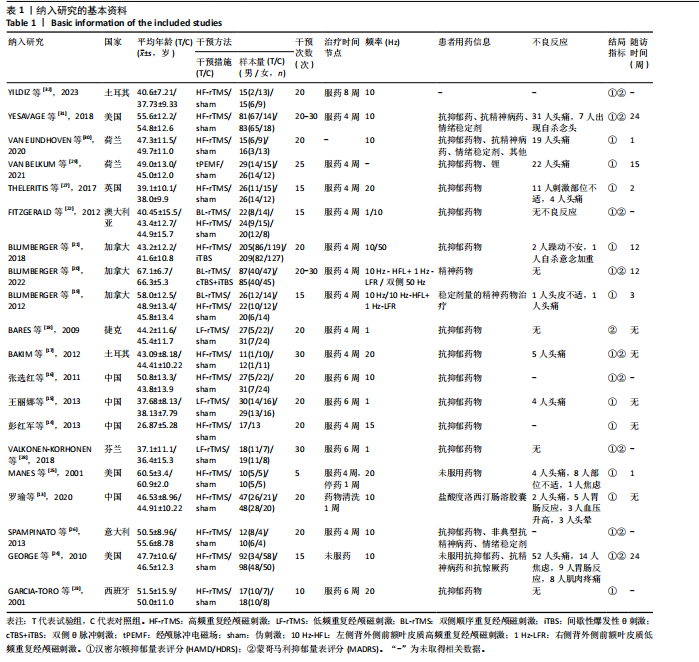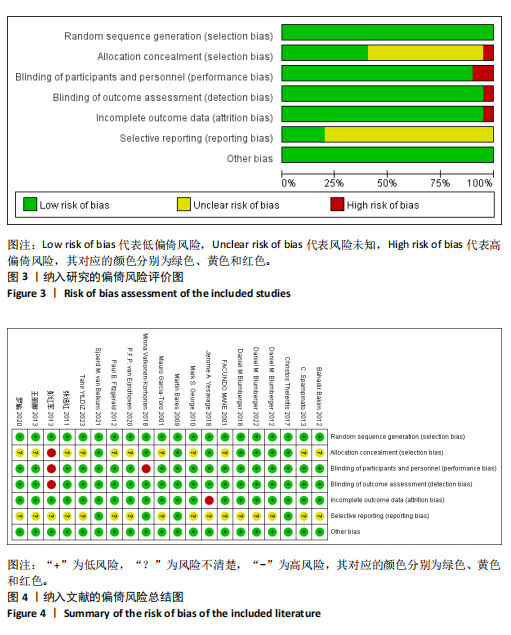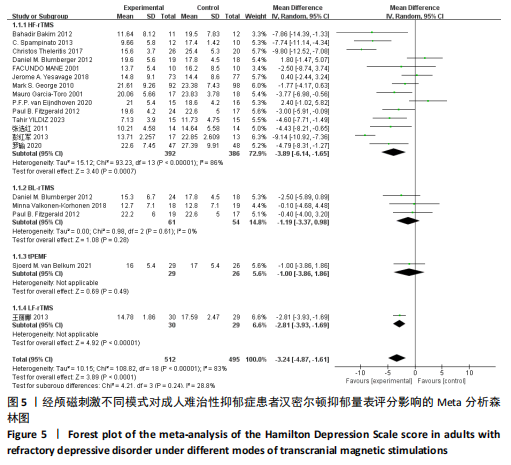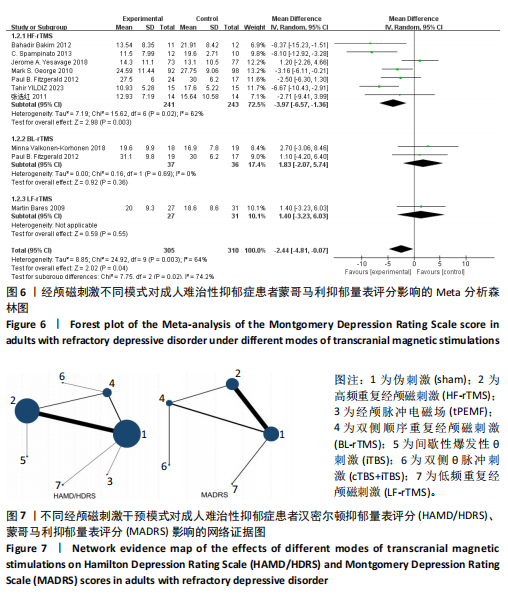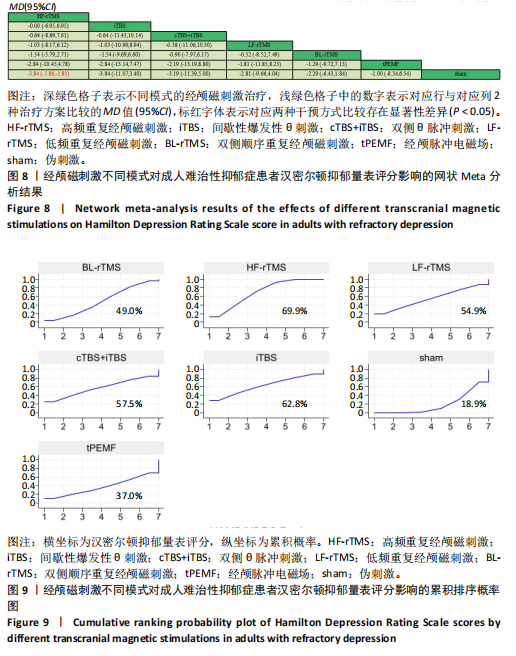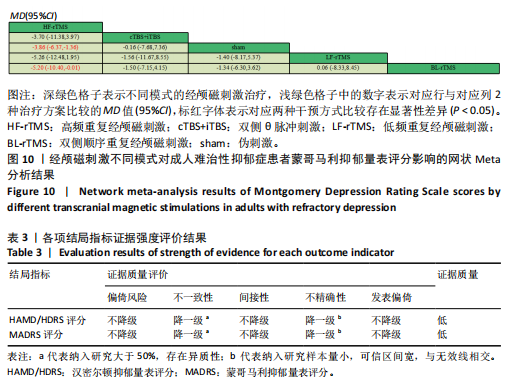[1] HERRMAN H, PATEL V, KIELING C, et al. Time for united action on depression: a Lancet-World Psychiatric Association Commission. Lancet. 2022; 399(10328):957-1022.
[2] PULL CB. DSM-IV. Encephale. 1995;21:15-20.
[3] BATTLE DE. Diagnostic and Statistical Manual of Mental Disorders (DSM). Codas. 2013;25(2):191-192.
[4] OTTE C, GOLD SM, PENNINX BW, et al. Major depressive disorder. Nat Rev Dis Primers. 2016;2: 16065.
[5] GAYNES BN, LUX L, GARTLEHNER G, et al. Defining treatment-resistant depression. Depress Anxiety. 2020;37(2):134-145.
[6] KVERNO KS, MANGANO E. Treatment-Resistant Depression: Approaches to Treatment. J Psychosoc Nurs Ment Health Serv. 2021;59(9):7-11.
[7] HAVLIK JL, WAHID S, TEOPIZ KM, et al. Recent Advances in the Treatment of Treatment-Resistant Depression: A Narrative Review of Literature Published from 2018 to 2023. Curr Psychiatry Rep. 2024;26(4):176-213.
[8] LEFAUCHEUR JP. Transcranial magnetic stimulation. Handb Clin Neurol. 2019;160:559-580.
[9] O’REARDON JP, SOLVASON HB, JANICAK PG, et al. Efficacy and safety of transcranial magnetic stimulation in the acute treatment of major depression: a multisite randomized controlled trial. Biol Psychiatry. 2007;62(11):1208-1216.
[10] PERERA T, GEORGE MS, GRAMMER G, et al. The Clinical TMS Society Consensus Review and Treatment Recommendations for TMS Therapy for Major Depressive Disorder. Brain Stimul. 2016; 9(3):336-346.
[11] 杨钰琳,常万鹏,丁江涛,等.经颅直流电刺激不同靶点治疗帕金森病效果的网状Meta分析[J].中国组织工程研究,2024,28(11):1797-1804.
[12] 崔甜甜,杨钰琳,崔腾腾,等.不同强化训练对脑性瘫痪儿童上肢运动功能效果的网状Meta分析[J].中国康复理论与实践,2024,30(4):437-448.
[13] 罗瑜,谷悦,刘海生,等.洛西汀联合高频重复经颅磁刺激治疗难治性抑郁症的对照研究[J].临床精神医学杂志,2020,30(1):60-62.
[14] 彭红军,李凌江,郑会蓉.反复经颅磁刺激治疗对难治性抑郁症白质微结构整合水平的影响[J].中国临床心理学杂志,2013,21(4):528-531.
[15] 王丽娜,潘飞,李玉凤.低频重复经颅磁刺激对难治性抑郁症的疗效及认知功能的影响[J].中国康复医学杂志,2013,28(6):544-548.
[16] 张选红,王立伟,王继军,等.经颅磁刺激治疗难治性抑郁症的双盲随机对照研究[J].上海精神医学,2011,23(1):17-24.
[17] BAKIM B, UZUN UE, KARAMUSTAFALIOGLU O, et al. The combination of antidepressant drug therapy and high-frequency repetitive transcranial magnetic stimulation in medication-resistant depression. Klinik Psikofarmakol Bulteni. 2012; 22(3):244-253.
[18] BARES M, KOPECEK M, NOVAK T, et al. Low frequency (1-Hz), right prefrontal repetitive transcranial magnetic stimulation (rTMS) compared with venlafaxine ER in the treatment of resistant depression: a double-blind, single-centre, randomized study. J Affect Disord. 2009;118(1-3): 94-100.
[19] BLUMBERGER DM, MULSANT BH, FITZGERALD PB, et al. A randomized double-blind sham-controlled comparison of unilateral and bilateral repetitive transcranial magnetic stimulation for treatment-resistant major depression. World J Biol Psychiatry. 2012;13(6):423-435.
[20] BLUMBERGER DM, MULSANT BH, THORPE KE, et al. Effectiveness of Standard Sequential Bilateral Repetitive Transcranial Magnetic Stimulation vs Bilateral Theta Burst Stimulation in Older Adults With Depression: The FOUR-D Randomized Noninferiority Clinical Trial. JAMA Psychiatry. 2022;79(11):1065-1073.
[21] BLUMBERGER DM, VILA-RODRIGUEZ F, THORPE KE, et al. Effectiveness of theta burst versus high-frequency repetitive transcranial magnetic stimulation in patients with depression (THREE-D): a randomised non-inferiority trial. Lancet. 2018; 391(10131):1683-1692.
[22] FITZGERALD PB, HOY KE, HERRING SE, et al. A double blind randomized trial of unilateral left and bilateral prefrontal cortex transcranial magnetic stimulation in treatment resistant major depression. J Affect Disord. 2012;139(2):193-198.
[23] GARCIA-TORO M, MAYOL A, ARNILLAS H, et al. Modest adjunctive benefit with transcranial magnetic stimulation in medication-resistant depression. J Affect Disord. 2001;64(2-3):271-275.
[24] GEORGE MS, LISANBY SH, AVERY D, et al. Daily left prefrontal transcranial magnetic stimulation therapy for major depressive disorder: a sham-controlled randomized trial. Arch Gen Psychiatry. 2010;67(5):507-516.
[25] MANES F, JORGE R, MORCUENDE M, et al. A controlled study of repetitive transcranial magnetic stimulation as a treatment of depression in the elderly. Int Psychogeriatr. 2001;13(2):225-231.
[26] SPAMPINATO C, AGUGLIA E, CONCERTO C, et al. Transcranial magnetic stimulation in the assessment of motor cortex excitability and treatment of drug-resistant major depression. IEEE Trans Neural Syst Rehabil Eng. 2013;21(3):391-403.
[27] THELERITIS C, SAKKAS P, PAPARRIGOPOULOS T, et al. Two Versus One High-Frequency Repetitive Transcranial Magnetic Stimulation Session per Day for Treatment-Resistant Depression: A Randomized Sham-Controlled Trial. J ECT. 2017;33(3):190-197.
[28] VALKONEN-KORHONEN M, LEINOLA H, KÖNÖNEN M, et al. Bifrontal active and sham rTMS in treatment-resistant unipolar major depression. Nord J Psychiatry. 2018;72(8):586-592.
[29] VAN BELKUM SM, DE BOER MK, OPMEER EM, et al. No antidepressant effects of low intensity transcranial pulsed electromagnetic fields for treatment resistant depression. J Affect Disord. 2021;294:679-685.
[30] VAN EIJNDHOVEN PFP, BARTHOLOMEUS J, MÖBIUS M, et al. A randomized controlled trial of a standard 4-week protocol of repetitive transcranial magnetic stimulation in severe treatment resistant depression. J Affect Disord. 2020;274:444-449.
[31] YESAVAGE JA, FAIRCHILD JK, MI Z, et al. Effect of Repetitive Transcranial Magnetic Stimulation on Treatment-Resistant Major Depression in US Veterans: A Randomized Clinical Trial. JAMA Psychiatry. 2018;75(9):884-893.
[32] YILDIZ T, OĞUZHANOĞLU NK, TOPAK OZ. Cognitive outcomes of transcranial magnetic stimulation in treatment-resistant depression: a randomized controlled study. Turk J Med Sci. 2023;53(1):253-263.
[33] 胡通,李萱,袁静,等.不同电磁刺激方案改善脑卒中后吞咽障碍的网状 Meta 分析[J].中国组织工程研究,2025,29(24):5224-5236.
[34] 熊丹,谢海花,李浩,等.不同重复经颅磁刺激模式对脑卒中后上肢运动功能障碍干预效果的网状Meta分析[J].中国全科医学,2023, 26(8):997-1007+1014.
[35] RYBAK YE, LAI KSP, RAMASUBBU R, et al. Treatment-resistant major depressive disorder: Canadian expert consensus on definition and assessment. Depress Anxiety. 2021;38(4):456-467.
[36] GIBSON TB, JING Y, SMITH CARLS G, et al. Cost burden of treatment resistance in patients with depression. Am J Manag Care. 2010;16(5):370-377.
[37] KATZ MM, TEKELL JL, BOWDEN CL, et al. Onset and early behavioral effects of pharmacologically different antidepressants and placebo in depression. Neuropsychopharmacology. 2004; 29(3):566-579.
[38] MACHADO-VIEIRA R, BAUMANN J, WHEELER-CASTILLO C, et al. The Timing of Antidepressant Effects: A Comparison of Diverse Pharmacological and Somatic Treatments. Pharmaceuticals (Basel). 2010;3(1):19-41.
[39] 华广顺,郭晨阳,张航,等.赛洛西宾治疗难治性抑郁症机制的研究现状[J].中国临床药理学杂志,2024,40(16):2428-2432.
[40] OLIVA V, LIPPI M, PACI R, et al. Gastrointestinal side effects associated with antidepressant treatments in patients with major depressive disorder: A systematic review and meta-analysis. Prog Neuropsychopharmacol Biol Psychiatry. 2021;109:110266.
[41] LEE SH, CHO SJ. Cognitive Behavioral Therapy and Mindfulness-Based Cognitive Therapy for Depressive Disorders. Adv Exp Med Biol. 2021; 1305:295-310.
[42] ZHANG B, FU W, GUO Y, et al. Effectiveness of mindfulness-based cognitive therapy against suicidal ideation in patients with depression: A systematic review and meta-analysis. J Affect Disord. 2022;319:655-662.
[43] 徐蕊,黄兴兵.难治性抑郁症非药物治疗新进展[J].实用医学杂志,2024,40(4):439-446.
[44] SAEED SA, CUNNINGHAM K, BLOCH RM. Depression and Anxiety Disorders: Benefits of Exercise, Yoga, and Meditation. Am Fam Physician. 2019;99(10):620-627.
[45] VOINESKOS D, DASKALAKIS ZJ, BLUMBERGER DM. Management of Treatment-Resistant Depression: Challenges and Strategies. Neuropsychiatr Dis Treat. 2020;16:221-234.
[46] BURKE MJ, FRIED PJ, PASCUAL-LEONE A. Transcranial magnetic stimulation: Neurophysiological and clinical applications. Handb Clin Neurol. 2019;163:73-92.
[47] SIGRIST C, VÖCKEL J, MACMASTER FP, et al. Transcranial magnetic stimulation in the treatment of adolescent depression: a systematic review and meta-analysis of aggregated and individual-patient data from uncontrolled studies. Eur Child Adolesc Psychiatry. 2022;31(10):1501-1525.
[48] MIRON JP, JODOIN VD, LESPÉRANCE P, et al. Repetitive transcranial magnetic stimulation for major depressive disorder: basic principles and future directions. Ther Adv Psychopharmacol. 2021;11:20451253211042696.
[49] BAEKEN C, VANDERHASSELT MA, REMUE J, et al. Intensive HF-rTMS treatment in refractory medication-resistant unipolar depressed patients. J Affect Disord. 2013;151(2):625-631.
[50] GELLE T, SAMEY RA, PLANSONT B, et al. BDNF and pro-BDNF in serum and exosomes in major depression: Evolution after antidepressant treatment. Prog Neuropsychopharmacol Biol Psychiatry. 2021;109:110229.
[51] GONSALVES MA, WHITE TL, BARREDO J, et al. Repetitive Transcranial Magnetic Stimulation-Associated Changes in Neocortical Metabolites in Major Depression: A Systematic Review. Neuroimage Clin. 2022;35:103049.
[52] KLOMJAI W, KATZ R, LACKMY-VALLÉE A. Basic principles of transcranial magnetic stimulation (TMS) and repetitive TMS (rTMS). Ann Phys Rehabil Med. 2015;58(4):208-213.
[53] BADAWY RA, LOETSCHER T, MACDONELL RA, et al. Cortical excitability and neurology: insights into the pathophysiology. Funct Neurol. 2012;27(3):131-145.
[54] SUPPA A, HUANG YZ, FUNKE K, et al. Ten Years of Theta Burst Stimulation in Humans: Established Knowledge, Unknowns and Prospects. Brain Stimul. 2016;9(3):323-335.
[55] CHUNG SW, HOY KE, FITZGERALD PB. Theta-burst stimulation: a new form of TMS treatment for depression? Depress Anxiety. 2015;32(3):182-192.
[56] VAN BELKUM SM, OPMEER EM, GEUGIES H, et al. Change in brain activation after transcranial pulsed electromagnetic fields in treatment-resistant depression. Eur Arch Psychiatry Clin Neurosci. 2024. doi: 10.1007/s00406-024-01797-w.
[57] HADLEY D, ANDERSON BS, BORCKARDT JJ, et al. Safety, tolerability, and effectiveness of high doses of adjunctive daily left prefrontal repetitive transcranial magnetic stimulation for treatment-resistant depression in a clinical setting. J ECT. 2011;27(1):18-25.
[58] HOLTZHEIMER PE 3RD, MCDONALD WM, MUFTI M, et al. Accelerated repetitive transcranial magnetic stimulation for treatment-resistant depression. Depress Anxiety. 2010;27(10):960-963.
[59] MCGIRR A, VAN DEN EYNDE F, TOVAR-PERDOMO S, et al. Effectiveness and acceptability of accelerated repetitive transcranial magnetic stimulation (rTMS) for treatment-resistant major depressive disorder: an open label trial. J Affect Disord. 2015;173:216-220.
[60] YIN BW, YANG L. Comparative Efficacy of Augmenting Escitalopram with Modified Electroconvulsive Therapy or High-Frequency Repetitive Transcranial Magnetic Stimulation on Depressive Symptoms, Quality of Life, and Cognitive Function in Treatment-Resistant Depression. Tohoku J Exp Med. 2024;262(3):191-199.
[61] WU GR, BAEKEN C. Exploring potential working mechanisms of accelerated HF-rTMS in refractory major depression with a focus on locus coeruleus connectivity. Eur Psychiatry. 2024;67(1):e70.
[62] COLE EJ, STIMPSON KH, BENTZLEY BS, et al. Stanford Accelerated Intelligent Neuromodulation Therapy for Treatment-Resistant Depression. Am J Psychiatry. 2020;177(8):716-726.
[63] FERRARELLI F, PHILLIPS ML. Examining and Modulating Neural Circuits in Psychiatric Disorders With Transcranial Magnetic Stimulation and Electroencephalography: Present Practices and Future Developments. Am J Psychiatry. 2021; 178(5):400-413.
[64] LI H, CUI L, LI J, et al. Comparative efficacy and acceptability of neuromodulation procedures in the treatment of treatment-resistant depression: a network meta-analysis of randomized controlled trials. J Affect Disord. 2021;287:115-124.
[65] SUBRAMANIAN S, LOPEZ R, ZORUMSKI CF, et al. Electroconvulsive therapy in treatment resistant depression. J Neurol Sci. 2022;434:120095.
|
